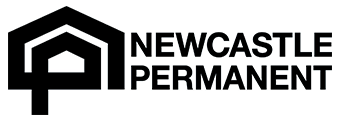Home loan comparison
Lender | |||||||||||||
|---|---|---|---|---|---|---|---|---|---|---|---|---|---|
| Variable | More details | ||||||||||||
| FEATURED | loans.com.au – Variable Home Loan P&I <90%
| ||||||||||||
loans.com.au – Variable Home Loan P&I <90%
| |||||||||||||
| Variable | More details | ||||||||||||
HSBC – Home Value Loan - Owner Occupied (LVR 70% to 80%)
| |||||||||||||
HSBC – Home Value Loan - Owner Occupied (LVR 70% to 80%)
| |||||||||||||
| Fixed | More details | ||||||||||||
Newcastle Permanent – Fixed Rate Home Loan (1 year)
| |||||||||||||
Newcastle Permanent – Fixed Rate Home Loan (1 year)
| |||||||||||||
| Variable | N/A | More details | |||||||||||
Beyond Bank – Purple Basic Variable Home Loan (>60%-80% LVR)
| |||||||||||||
Beyond Bank – Purple Basic Variable Home Loan (>60%-80% LVR)
| |||||||||||||
| Variable | More details | ||||||||||||
Athena Home Loans – Straight Up Owner Occupied - Obliterate (LVR < 50%) (Principal and Interest)
| |||||||||||||
Athena Home Loans – Straight Up Owner Occupied - Obliterate (LVR < 50%) (Principal and Interest)
| |||||||||||||
| Fixed | More details | ||||||||||||
IMB Bank – Fixed Rate Home Loan (Principal and Interest) (LVR < 80%) (1 year)
| |||||||||||||
IMB Bank – Fixed Rate Home Loan (Principal and Interest) (LVR < 80%) (1 year)
| |||||||||||||
| Variable | More details | ||||||||||||
Liberty Financial – Flexible Home Loan LVR >95% (Owner Occupier)
| |||||||||||||
Liberty Financial – Flexible Home Loan LVR >95% (Owner Occupier)
| |||||||||||||

- Available for purchase or refinance, min 10% deposit needed to qualify.
- No application, ongoing monthly or annual fees.
- Quick and easy online application process.
Base criteria of: a $400,000 loan amount, variable, fixed, principal and interest (P&I) home loans with an LVR (loan-to-value) ratio of at least 80%. However, the ‘Compare Home Loans’ table allows for calculations to be made on variables as selected and input by the user. Some products will be marked as promoted, featured or sponsored and may appear prominently in the tables regardless of their attributes. All products will list the LVR with the product and rate which are clearly published on the product provider’s website. Monthly repayments, once the base criteria are altered by the user, will be based on the selected products’ advertised rates and determined by the loan amount, repayment type, loan term and LVR as input by the user/you. *The Comparison rate is based on a $150,000 loan over 25 years. Warning: this comparison rate is true only for this example and may not include all fees and charges. Different terms, fees or other loan amounts might result in a different comparison rate. Rates correct as of July 10, 2025. View disclaimer.
Powered by:
 Savings.com.au
Savings.com.au
Savings.com.au Pty Ltd ACN 161 358 363 | Australian Financial Services Licence and Australian Credit Licence 515843
Purchase: Total Cost of Home Loan Calculator
This calculator provides you with an estimate of the total cost of your home loan
Assumptions:
Interest
The calculator assumes that the rate you enter is the rate that will apply to your loan for the full loan term.
First Home Owner Grant
The amounts available for First Home Owner Grants are sourced from the relevant state and territory government websites as at April 2020. The calculator does not take into account any grants or concessions. The calculator does not take into account location in metropolitan or regional areas of a state, and assumes the date of purchase is within the eligible date range specified by each state. The calculator provides an indication as to whether you may be eligible for the grant, and is not a guarantee of eligibility.
Fees
Property transfer fees and mortgage registration fees are taken from the relevant state or territory land titles office websites as at April 2020.
Lender's mortgage insurance
The calculator estimates the amount of lender's mortgage insurance and includes it as an upfront cost, not as part of the loan.
Repayments
We assume that:
- repayments are made on a monthly basis;
- the interest rate charge is divided equally over 12 monthly payments; and
- interest is charged to the loan account at the same frequency and on the same day as the repayments are made.
Only your initial repayment amount is calculated. We assume that this repayment amount is payable for the loan term. In practice, repayment amounts can change for a variety of reasons.
What are the upfront costs of a home loan?
Deposit
When purchasing a property, the deposit is a percentage of the purchase price. This outlay is often the largest for home buyers and most aim to have a deposit of at least 20% of the purchase price. The key benefits of a 20% deposit is the avoidance of paying Lenders Mortgage Insurance (LMI) and lowering your loan to value ratio (LVR), which means you present as a ‘safer’ borrower to lenders. When lenders see you as a low-risk borrower, they are more willing to offer you a lower interest rate on your loan, and you may have an increased borrowing power.
Mortgage Registration Fee
This government fee is the cost of registering your lender's mortgage on the title of the property. In the situation the property seller has an existing mortgage, the buyer could be charged for removal of this mortgage, however, the seller will reimburse this cost at settlement.
Transfer Duty / Stamp Duty
This is a state tax that must be paid and the rate varies according to the property's location and value at the time of purchase. If the property’s value is under $600,000 stamp duty fees may be avoided, however, this hinges on your state or territory.
Loan Application Fee
The application fee may also be referred to as the establishment fee. This is generally necessary to initiate the home loan and is a one-off cost, payable to your chosen lender. Depending on the lender, homebuyers may be able to negotiate their way out of this fee.
Discharge Fee
This is a fee that is charged by the lender whenever a loan is paid out, regardless of whether it is by a property sale, refinance, or simply paying out the loan with savings. The discharge fee is charged to cover the costs incurred by your lender throughout processing the discharge of a mortgage.
Monthly Repayment
Ongoing monthly mortgage repayments are constant throughout the term of the loan, and are determined by the conditions of your home loan set by your lender.
Interest charged on a home loan
The interest charged on your loan is determined using a number of different factors. These include your loan amount, interest rate and the term of the loan.
There are a few things you can do to reduce the interest charged on your loan, such as having a competitive interest rate, making extra repayments when you can, and increasing the loan repayment frequency.
Doing this will mean you’ll be reducing the amount of interest charged against the loan balance. Additionally, you may be able to utilise tools such as redraw facilities or offset accounts to your benefit.
First Home Owners Grant
The first home owners grant is a government initiative to help first home buyers get their foot in the property market.
Eligibility criteria and the grant size depends on your state or territory and the value of the property, and often only applies to first home buyers purchasing a new (un-lived in) home or building a house.
If you obtain a first home owners grant, you could be eligible for a one-off payment by the government and stamp duty exemptions through the First Home Buyer Scheme.
Lenders Mortgage Insurance
Lenders Mortgage Insurance (LMI) is a cost that home buyers may have to pay if their deposit is below 20% of the purchase price. LMI exists because borrowers with a deposit below 20% are considered to be a higher risk, and LMI protects the lender in the instance a borrower defaults on their mortgage (ie, when a borrower is unable to meet their repayments).
What about hidden costs, fees and charges?
It's likely there is a number of other hidden costs, fees and charges associated with the process of buying a home and your home loan. Some of these are explained below:
Property Valuation
As many lenders require a property valuation during the application process, the home buyer is generally required to pay this.
Redraw Fees
Some lenders may charge a fee when borrowers use their redraw facility. If you're planning on using your redraw frequently, it's important to research lenders that offer this facility free of charge, as these fees can add up.
Break Fees
These predominantly apply to fixed-rate loans and are charged to the home owner when they break the fixed interest rate term of their loan.
Use comparison rates
When assessing which home loan you are going to choose, it's beneficial to use the comparison rate as it represents the true cost of a loan.
This is because instead of just including the interest rate, a comparison rate takes into consideration interest rate and fees and charges. Using the comparison rate will allow you to have a more accurate understanding of the costs you are about to be faced with and help you budget more effectively.
Other charges to factor in:
-
Legal and conveyancing costs: These costs are incurred as a typical home buyer may need the help of a solicitor or conveyancer to review the title transfer and the contract when buying their property.
-
Building inspection fees: This fee is payed for a qualified building inspector to evaluate the safety and maintenance issues associated with the property.
-
Insurance: Insurance for your new property is a very important thing to consider and you’ll be thankful to have it in the event of an unforeseen occurrence.
-
Water and rates: These costs will vary depending on your state, council area and suburb. The outlay will go towards the likes of your water connection and usage and council services.
-
Repairs and maintenance costs: When purchasing a new property, you may face unexpected issues that require maintenance, so it’s important to consider this when budgeting, especially when purchasing an older home.
Base criteria of: a $400,000 loan amount, variable, fixed, principal and interest (P&I) home loans with an LVR (loan-to-value) ratio of at least 80%. However, the ‘Compare Home Loans’ table allows for calculations to made on variables as selected and input by the user. All products will list the LVR with the product and rate which are clearly published on the Product Provider’s web site. Monthly repayments, once the base criteria are altered by the user, will be based on the selected products’ advertised rates and determined by the loan amount, repayment type, loan term and LVR as input by the user/you. Rates correct as of 15 August 2025.
^The addition of offset sub-account means your comparison rate will change.
Powered by:
 Savings.com.au
Savings.com.au
Savings.com.au Pty Ltd ACN 161 358 363 | Australian Financial Services Licence and Australian Credit Licence 515843






